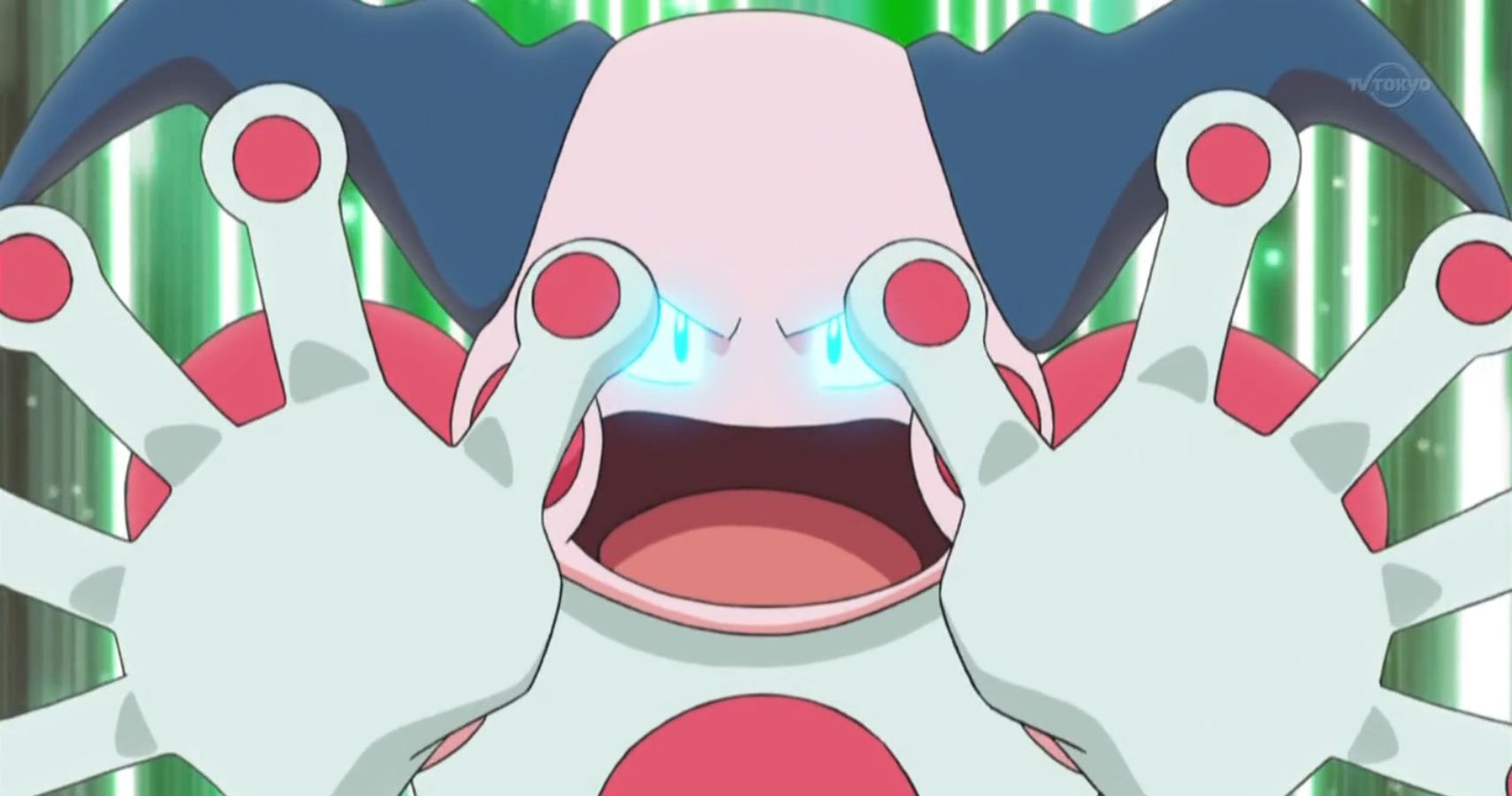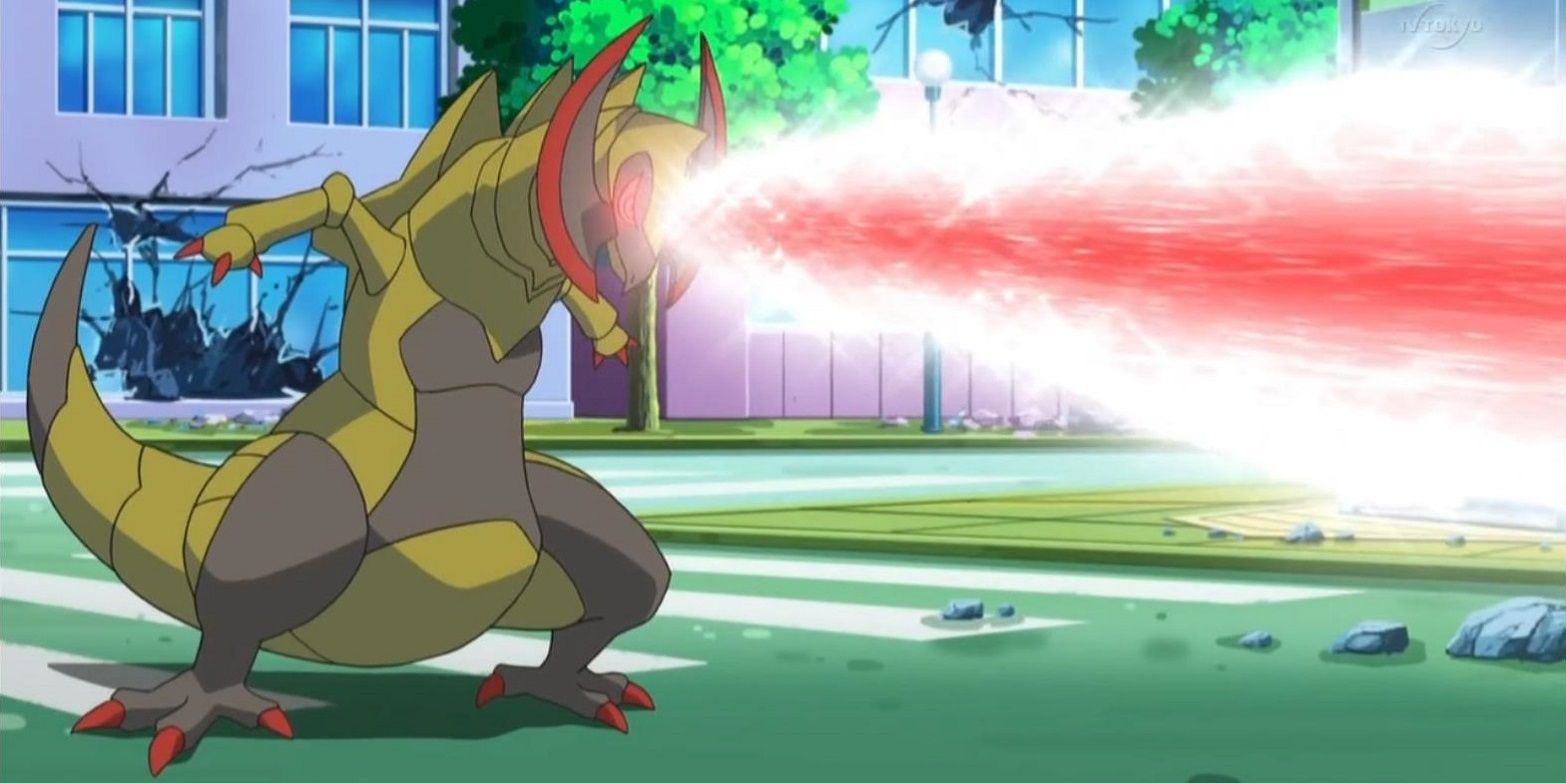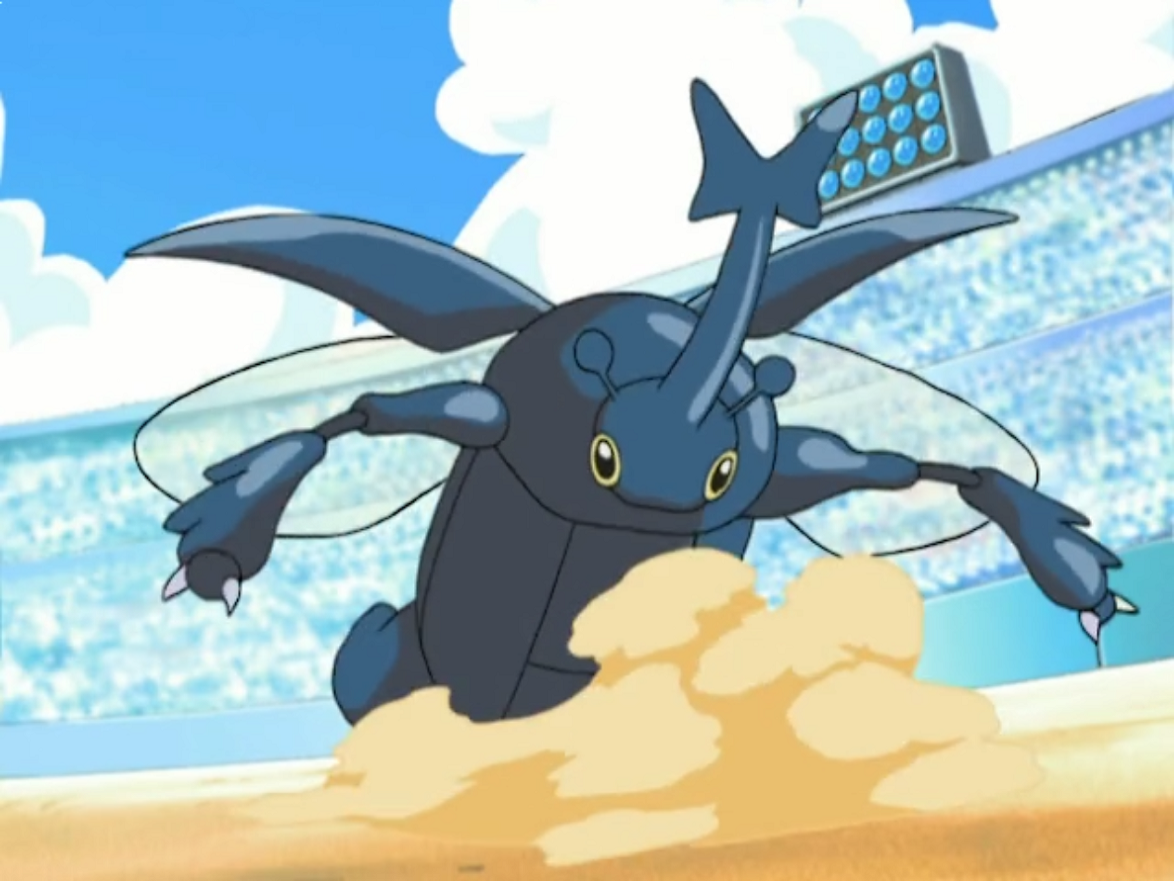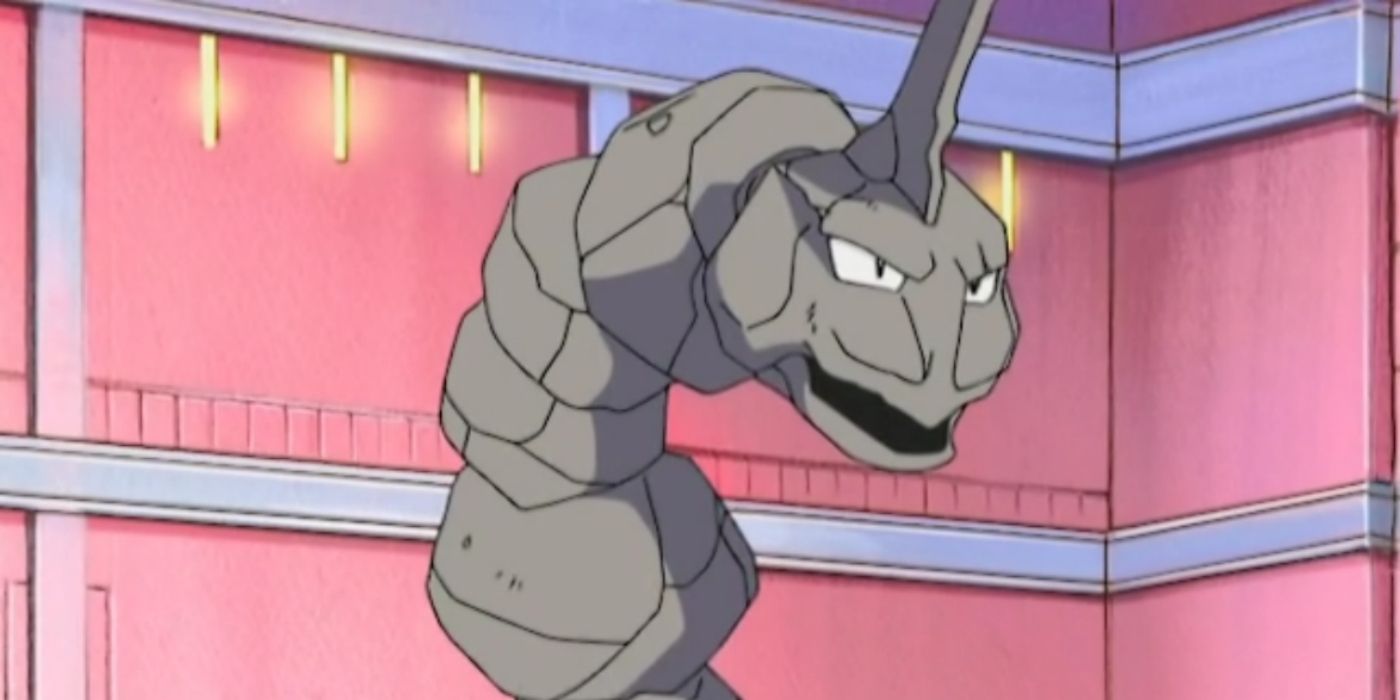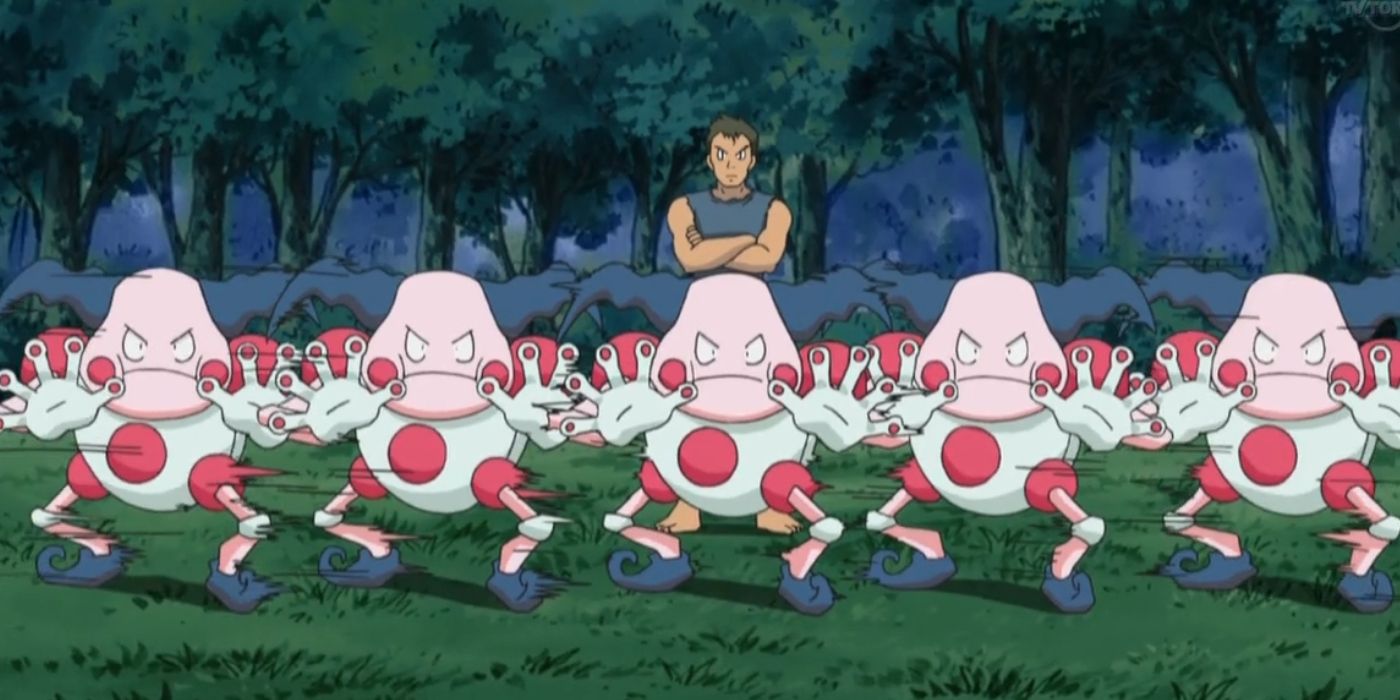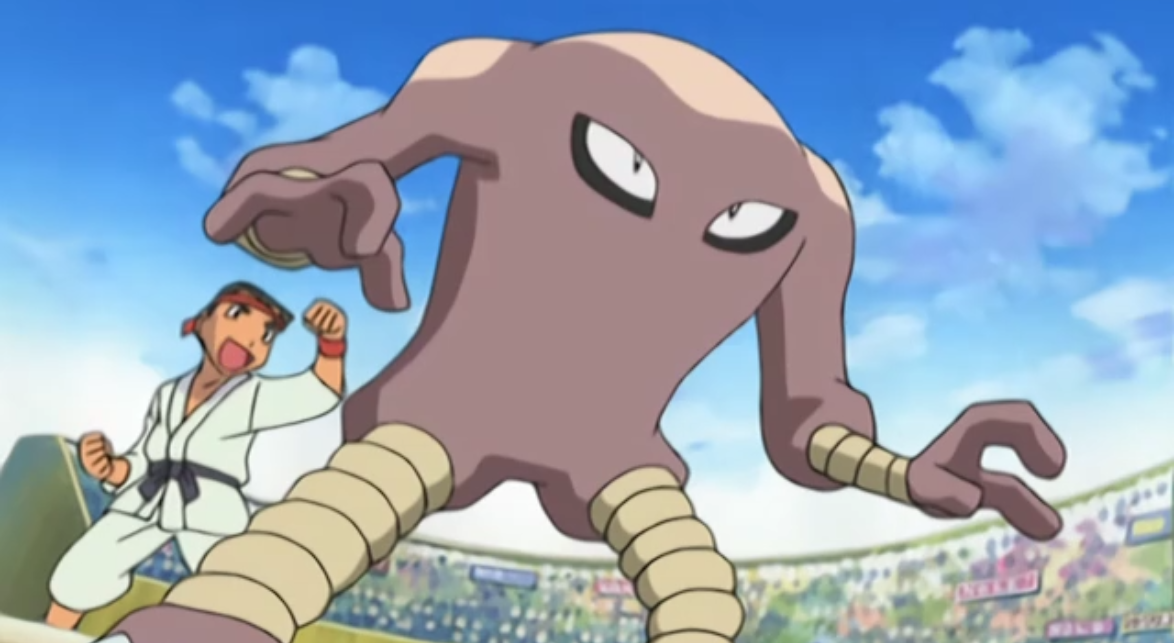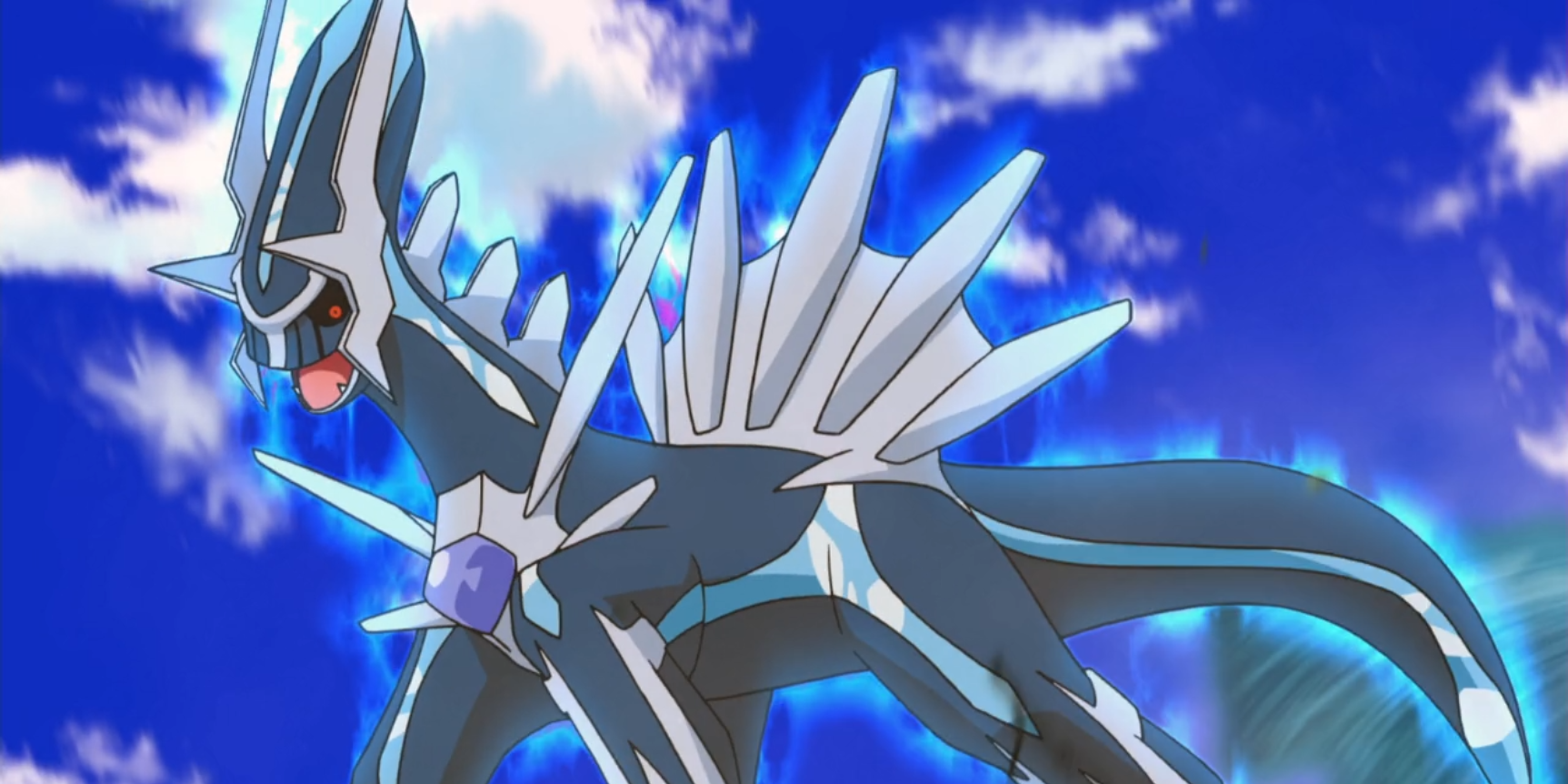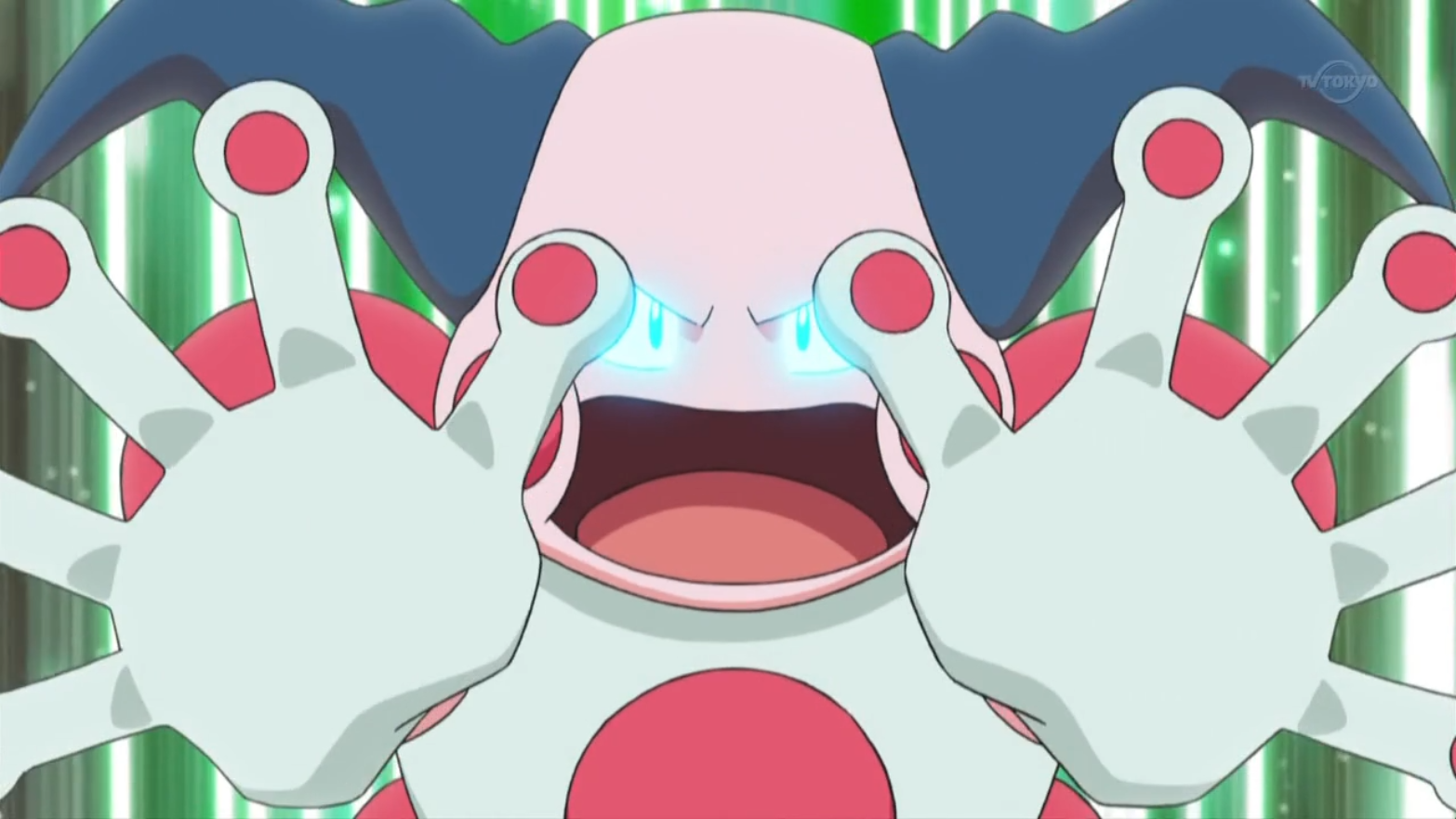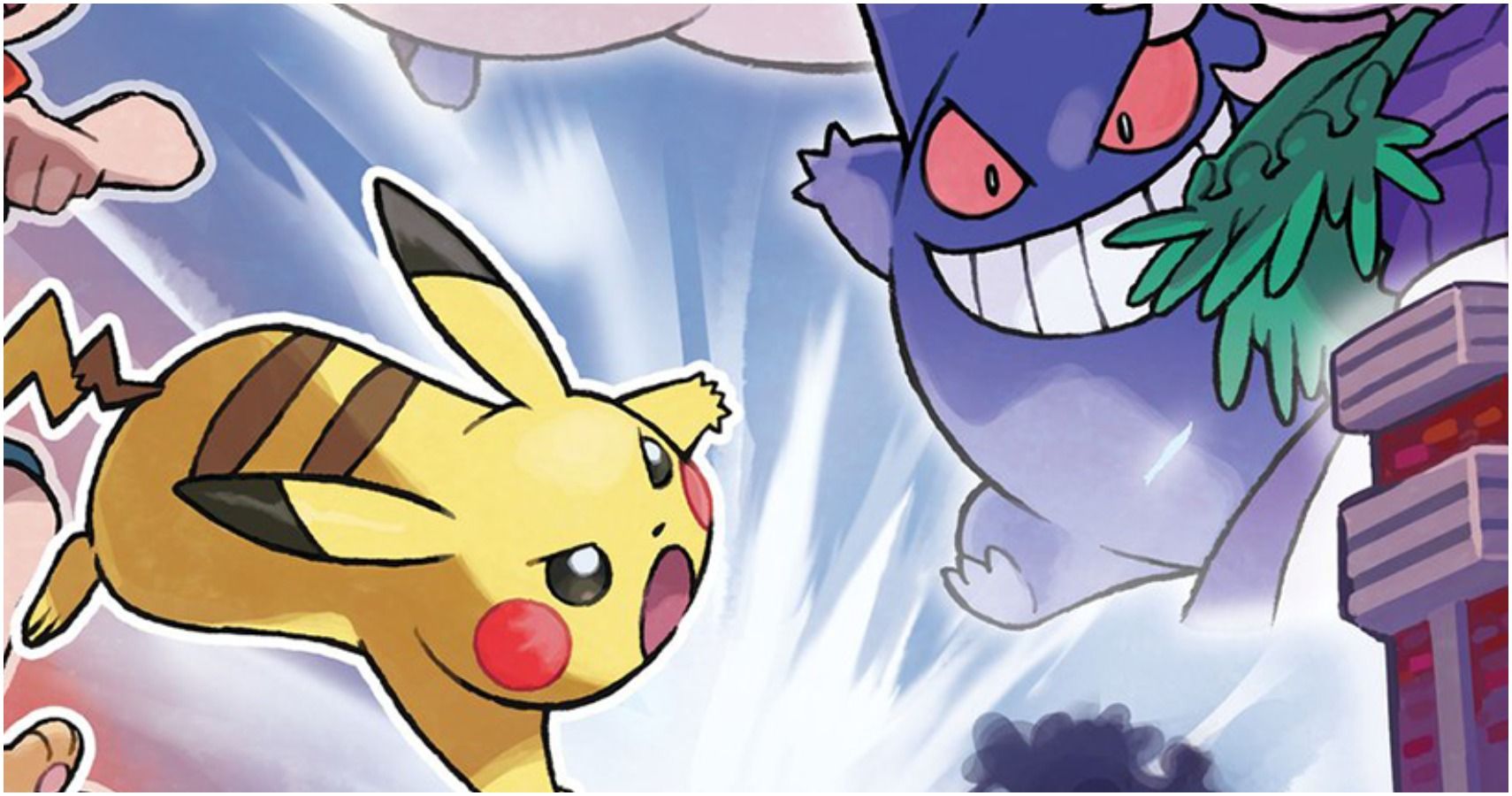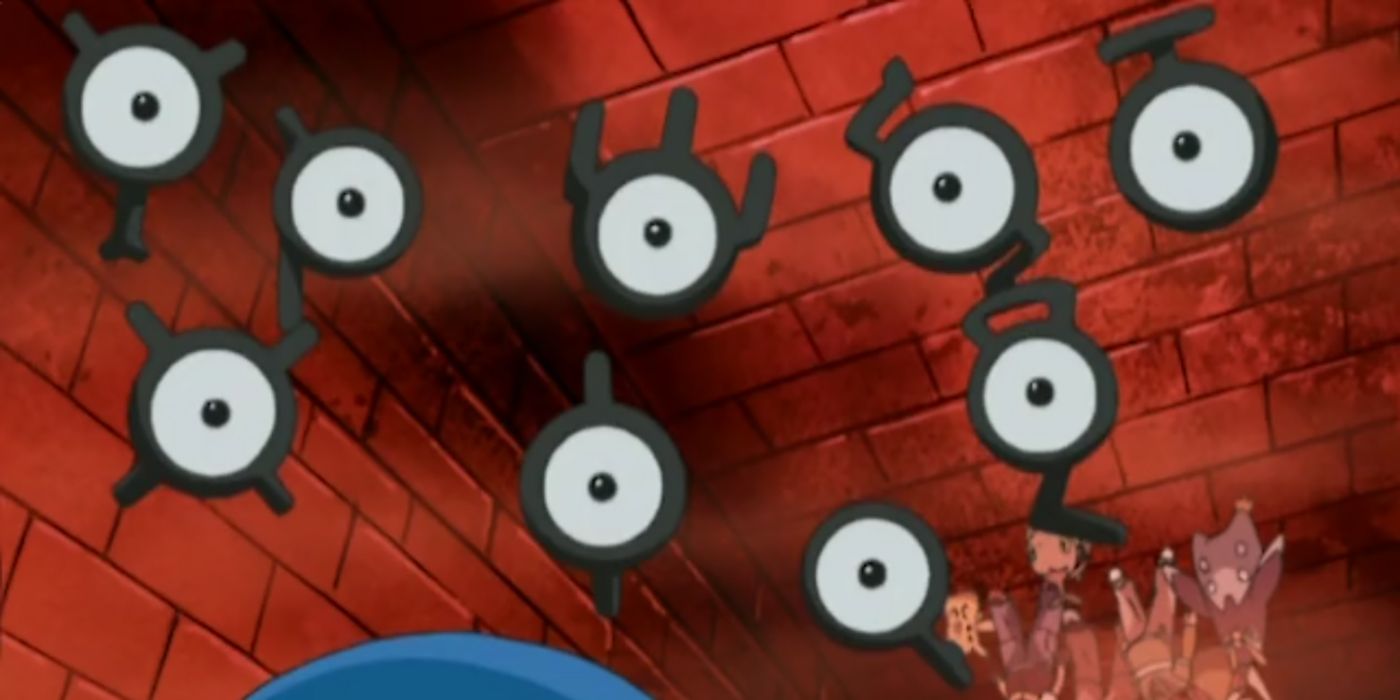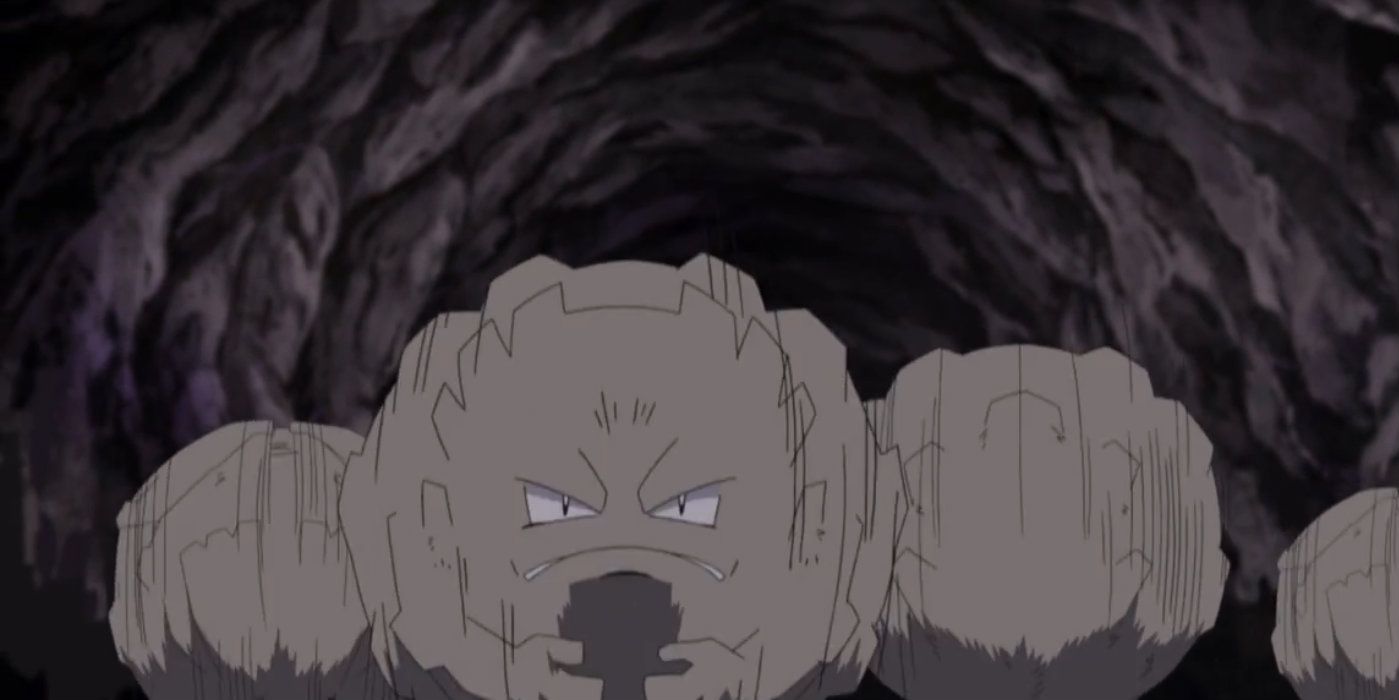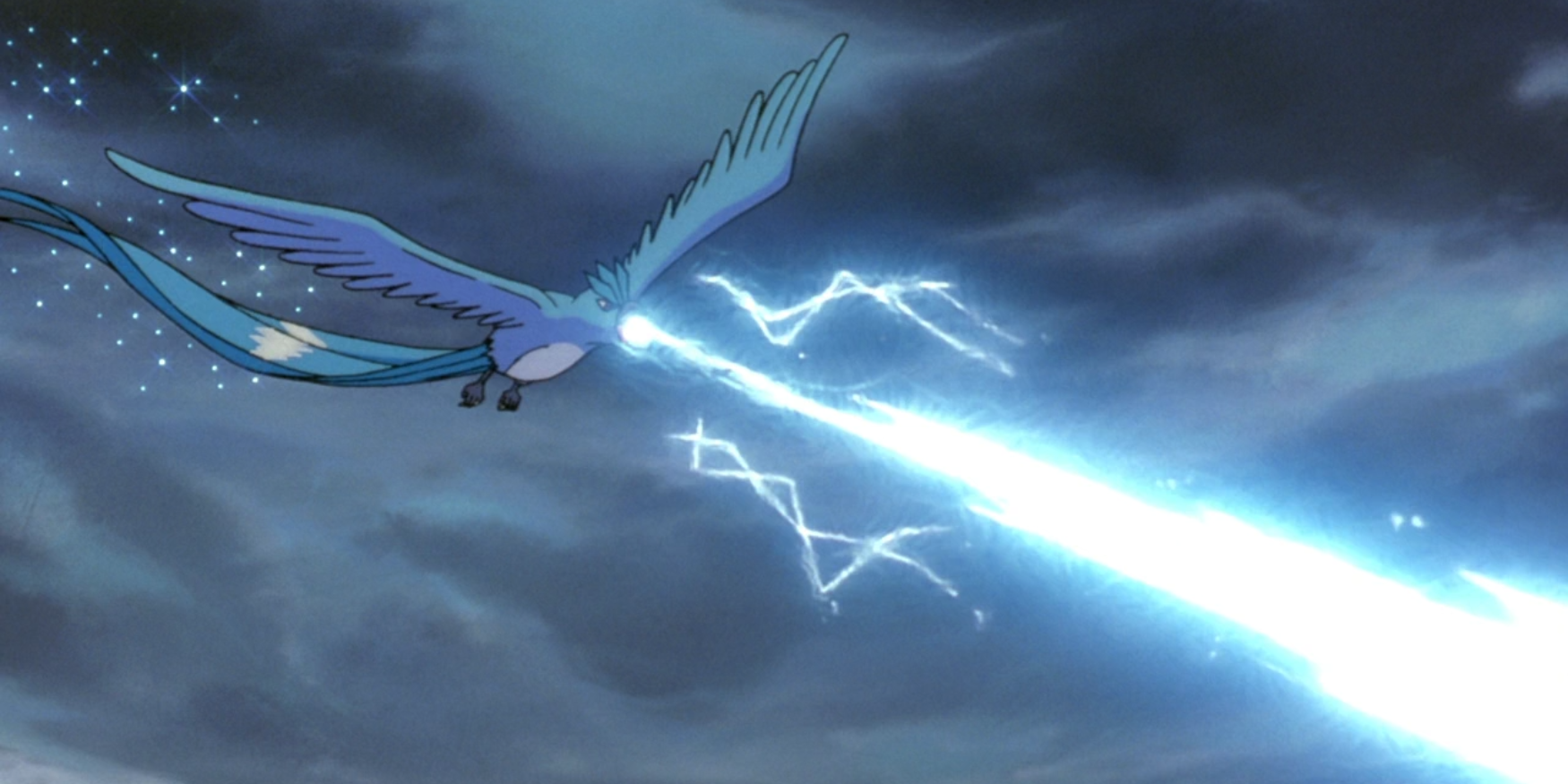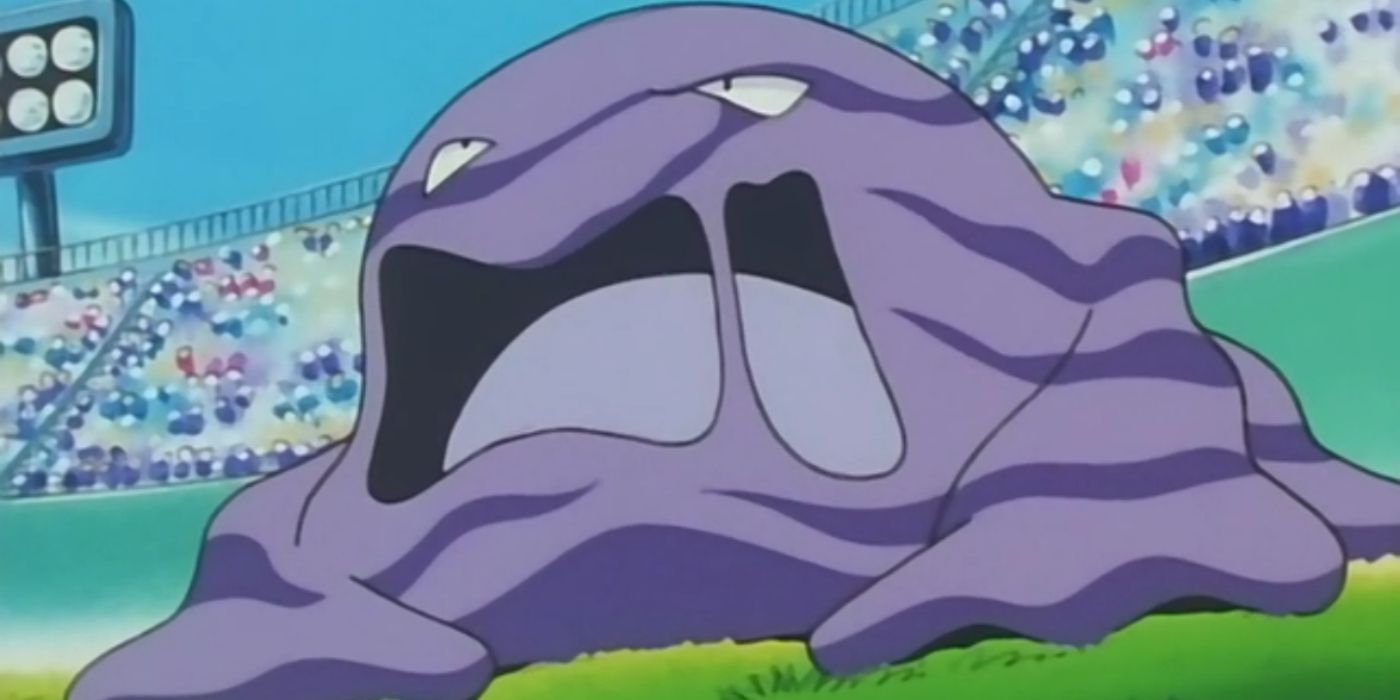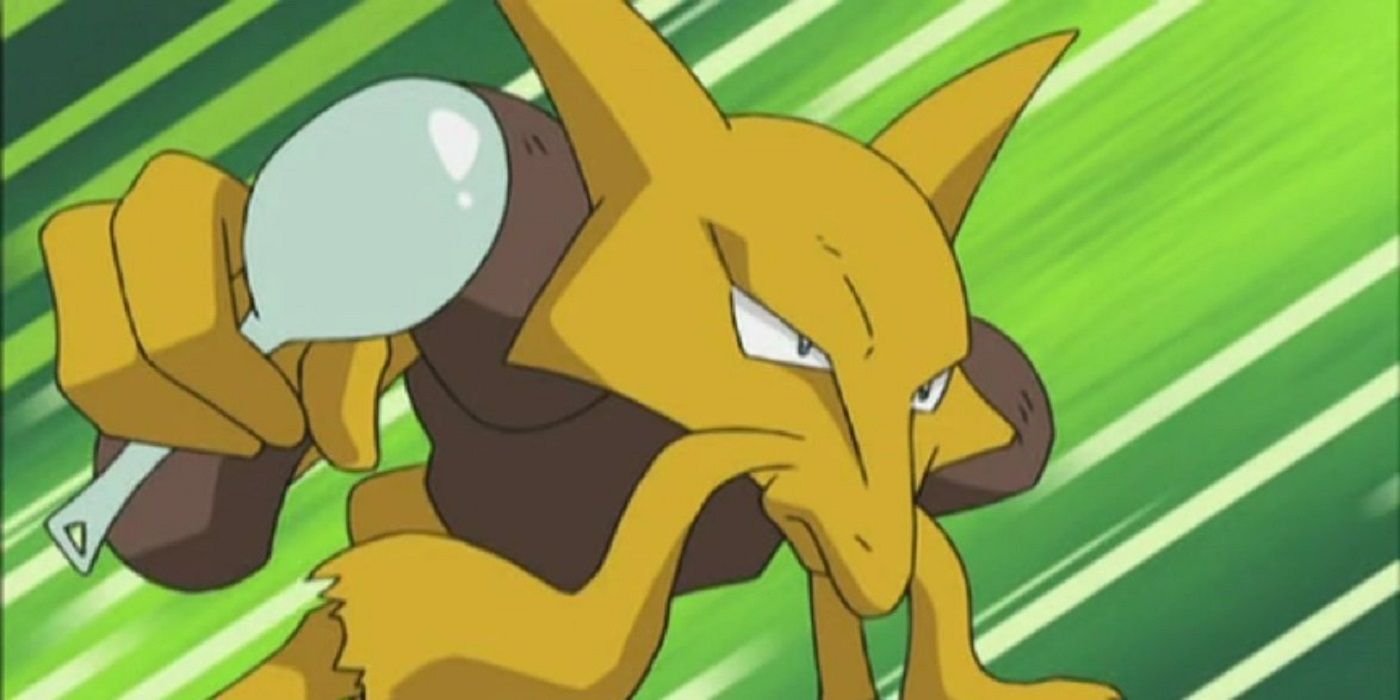Battling with other real-life trainers was always part of the Pokémon equation.
With the Red and Blue versions (and a Game Boy Link Cable) you could pit your well-trained team against your friends (and enemies), and it was pretty darn immersive and fun. But was it balanced? Absolutely not… not in the slightest.
Despite having multiplayer competition in the series’ very DNA, the Pokémon franchise’s balance was predominantly focused on the single-player experience, meaning that no one on the development teams had really considered the potential for fair competition in real life trainer-to-trainer battles, whether it was just between friends or part of an official tournament.
The various combat imbalances have been with the series for years, but it’s only been comparatively recently that the developers started striving to balance the game for the (now online) multiplayer experience.
While official (and non-official) tournaments had been trying to deal with the issues by banning certain moves and combinations since the advent of competition, it’s great to see the actual makers of the game dive right in and start banning moves for online play and official tournaments, too.
The developers aren’t perfect, though, and despite their best efforts, a few extremely powerful and exploitable moves and combinations have slipped through the cracks, and that’s what we’re going to be addressing today.
With our list of Pokémon: 20 Attacks So Powerful They Should Be Banned, we’ll be dealing with exactly what the headline suggests: moves that are so absurdly strong (or artificially balanced) that they would probably be better off getting banned entirely from competitive multiplayer.
Hyper Beam
Debuting all the way back in Generation I and remaining not just a stalwart of the series, but becoming one of its most iconic moves, Hyper Beam is a well-respected symbol of power in the Pokéverse.
Hyper Beam is also, unsurprisingly, insanely powerful and the developers should consider removing it from competition in order to better protect fair play.
Hyper Beam is a move that, on the surface, seems like it’s been sufficiently handicapped, due to its mandatory recharge period, but that’s simply not enough to stop skilled players from destroying opponents.
It would be wrong to nerf or fundamentally alter the move due to its iconic status, so it seems that a ban might be the only option.
Minimize
Minimize is one of the more inexplicable moves to be featured in the Pokémon games (then again, almost no Pokémon's moves make much sense to start with… right, Metronome?).
It mysteriously shrinks your Pokémon down to a bug-like size and vastly increases their evasive capabilities while leaving their attack strength the way it was… despite the fact that they’re the size of an ant.
In full transparency, there are an increasing collection of moves that can counter the benefits of Minimize, often with fatal precision, but very few, if any of them, are of benefit to a competitive-level team.
Some fans have suggested multiple solutions to “fixing” the Minimize problem, but it’s hardly the worst offender of Evasion-enhancing moves…
Substitute
Somewhat like Hyper Beam, Substitute is a powerful move but appears to be sufficiently handicapped so it isn’t overpowered. And again, just like Hyper Beam, the supposed handicap doesn’t do nearly enough to stop Substitute from being spammed.
First appearing in the original Generation I duology, Substitute was one of the stranger and less-direct Pokémon moves to exist.
Using it creates a little inanimate creature that takes your damage for you.
At the cost of 25% HP from the one who makes the substitute, you’d think that’d do the trick, but it’s really only a small price to pay in the hands of master trainers.
Making matters worse is that you can immediately create another substitute should the first one be destroyed.
Outrage
Back before the advent of Fairy-type Pokémon (or at least before the actual type was defined), Dragon-types were as legendary as the creatures they were based on… and as cataclysmically destructive.
With no Fairy-types to counter Dragons, your best bet was an Ice Pokémon (like Articuno), but even then, Outrage was a brutal attack to survive, let alone counter.
Despite the general weakening of the Dragon reputation, Outrage is still a mean attack that offers only a very minimal drawback, even if you repeatedly spam the maneuver.
And what is that drawback? It’s confusion. The very temporary confusion that might not even cause you to hurt yourself.
“Wow, that’ll really stop me from spamming Outrage”... said no one ever.
Megahorn
When you think of Bug-type Pokémon, your first thoughts are likely to be about the cute-but-weak creepy crawlers found in Viridian Forest, like Caterpie, Metapod, and Butterfree.
While Bug-types certainly have their uses, they’ve never been synonymous with effective offense and power.
Enter Heracross… specifically, one armed with Megahorn.
This brutal move is so overpowered that the shame of the Bug-types has almost been completely erased without a trace.
Megahorn will put down almost any Dark-type (probably permanently, too) with its borderline savage base attack power and its dreadfully honed accuracy.
In fact, there isn’t really a downside to Megahorn. In years past, simply being a Bug-type was “downside” enough… but no longer… especially when they’re armed with this overpowered technique.
Close Combat
One of the few moves on our list that doesn’t exclusively deal damage or is solely a buff or debuff, Close Combat straddles the fine line between reasonably tactical and ridiculously useful. Regardless of where Close Combat ends up on that particular spectrum, however, it’s still blisteringly overpowered despite its seemingly humble effects.
Not only does it deal fairly significant damage, but it also debuffs the victim of its furious punches, slamming their Defense and Special Defense numbers to the minimum.
Now, if you have a Pokémon with lightning Speed and a lethal Attack stat, you can imagine the kind of chaos you can cause against an enemy team with nothing but this one move, hence the issue.
Stealth Rock
Pokémon battles, even at their most unbalanced, have always boiled down to a rock-paper-scissors-esque style of element versus element, with the main goal being to totally deplete an opponent’s HP.
The practically broken Stealth Rock manages to take both of the rock-paper-scissors and HP depletion concepts and amp them up into a nearly unstoppable force.
The move is reliable, doing a set amount of damage based on the target’s maximum HP depending on how weak they are against Rock-type attacks, which could lead to apocalyptic damage.
Worst of all, though, is that Stealth Rock quickly strikes any Pokémon who switches in.
In conclusion, Stealth Rock not only punishes fresh Pokémon, but it’s also fast and powerful. Oh, and utterly broken.
Softboiled
Whether it’s the latest entry in the franchise, the classic Pokémon Red and Blue, or even Pokémon GO, if you’ve got a Chansey or a Blissy, you know they’re devastating tanks capable of absorbing an almost absurd amount of punishment before showing even the slightest sign of fatigue.
That’s all well and good, but when you combine their natural endurance with their unique move “Softboiled,” things immediately take a step from the reasonably difficult to the painfully unfair.
Softboiled heals the Pokémon by 50% of their total, maximum HP.
It’s hard enough to knock one of these things out, but right when you think you’ve got them where you want them, BOOM, softboiled… and then the nightmare begins all over again.
Double Team
Despite the balance issues that plague the Pokémon games, it was always cool to see the variety of moves that even the earliest entries, including a collection of status-altering (for good or ill) techniques. This idea has been expanded upon with nearly every entry, often for the better.
There’s one specific move that in that category that could use some critical attention, however, and it’s Double Team.
Double Team does nothing but raise a Pokémon’s Evasion stat, but when it’s combined with a Pokémon who’s already extremely difficult to hit and likely armed with savagely accurate attacks, it becomes more than a nuisance.
While there are certainly counters for Double Team, the fact that it, and other Evasion-raising moves, injects a large chunk of luck into competitive battles, a movement has grown for banning the move and others like it.
High Jump Kick
Let’s get this out of the way as quick as possible: if you miss with your High Jump Kick, you get severely punished, sustaining an enormous chunk of the damage that would have been done to your opponent.
That seems like a reasonable punishment for a move that is as swift and powerful as High Jump Kick, but it really isn’t.
You see, you’re not really playing with fire as much as it sounds like you are, since the punishment for missing the move rarely occurs. Why? Because you have a 90% chance to hit.
So we’ve got an extremely powerful attack that’s highly accurate, with the only caveat being that you can get hurt on the excruciatingly minimal chance that you miss (and you almost certainly won’t.)
Sound fair?
Scald
You know who’s cool? Blastoise. It’s a giant turtle with huge guns on its back, what more do you want? AND its got Hydro Pump… a devastating water move!
But do you know what Hydro Pump doesn't do? It doesn’t thaw frozen Pokémon, and it doesn’t have perfect accuracy. Oh, and it DEFINITELY doesn’t burn its targets.
But do you know what does? Scald.
Yes, there is a WATER-TYPE move that can actually BURN opponents and THAW ice. And it never misses.
If that doesn’t scream “I AM BROKEN” to you, we don’t know what does.
Forget your Surf, Hydro Pump, Water Gun, and even Bubblebeam… heck, forget Flamethrower while you’re at it, too.
Scald shatters the rock-paper-scissors of Pokémon, and that’s definitely ban-worthy.
Roar Of Time
The signature move of the legendary Pokémon Dialga, Roar of Time is an appropriately devastating attack… but is it game-breaking, unfair, and balance-shattering? Yes to all of the above.
Frankly, we won’t even really need to discuss why the move is in desperate need of some major trimming since you’ll be able to see it for yourself just by reading what it does:
It deals a whopping amount of damage with a power of 150, but it’s also 90% accurate.
This move might as well be a sniper rifle/rail-gun hybrid at that point.
Like Hyper Beam, Roar of Time requires its user to recharge during the following turn, but with such a destructive force, it’s less of a rest and more like the delaying of the inevitable.
Protect
In a rare move for this list, Protect (as its name suggests) is very, very far from an offensive, or even damage-dealing move. Instead, it acts as a practically impenetrable shield… and we mean it.
No matter what’s thrown at you, whether it’s a status-effect-inducing barrage like Toxic or back-breaking, fully-charged Solar Beam, if you’ve got Protect on, you’re perfectly safe.
In truth, Protect does have a fairly serious drawback, and that’s the fact that when you use it consecutively, its chance of actually working will be halved.
That sounds like a deal-breaker, but smart players will have planned ahead and will know how to avoid overusing the move… which, ironically, will allow them to spam it against other players who might not be able to catch a break in between bouts of unbreakable Protect and swift attacks.
Thunderbolt
How could an attack as profoundly basic as Thunderbolt be on a list comprised of moves that are so absurdly overpowered that they should probably be banned?
It’s a worthy question, but we’re certain that you already know the answer: Thunderbolt is accurate, powerful, widespread, and incredibly reliable.
In a similar boat with moves like Flamethrower and Ice Beam (more on that one later), Thunderbolt is practically a mascot for the Electric-type, and it’s one of the best Electric moves to go to for nearly every situation.
As we’ll see later, Thunderbolt is less impressive than Ice Beam, but it puts Flamethrower to shame.
Not only do you get an insanely accurate attack that deals significant damage, but it runs the risk of paralyzing a foe, rendering them almost totally useless.
Hidden Power
Introduced in the Gold and Silver versions, Hidden Power is a move that, at first glance, doesn’t seem all that powerful, nor does it seem game-breaking or remotely ban-worthy for unbalancing competition.
But that’s the thing with Hidden Power… it’s an insidious move that looks innocent but bends the in-game rules to its will with wanton abandon.
It’s because of these rule-breaking properties that almost every Pokémon in every competitive party has Hidden Power in their arsenal.
Essentially, it uses IVs to determine its type and deal that type-specific damage, meaning that you can train your Pokémon so that their Hidden Power will do type-damage that they were never meant to deliver, such as a Water Pokémon using an Electric-type Hidden Power.
See the game-breaking problem?
Earthquake
A truly classic move, Earthquake has been a cherished part of the pocket monster arsenal since Red first left Pallet Town.
Earthquake is nearly the most iconic move in the series, and any trainer who doesn’t regularly employ this attack probably doesn’t even know how to catch a Pidgey.
It’s extremely powerful, has pinpoint accuracy, high PP, and it even doubles its power against targets who are currently “Digging.”
In all seriousness, it’s as unstoppable as its namesake.
If you don’t believe us, fire up a Quick Battle in Pokémon Stadium and use Sandshrew for a single turn. It’ll tell you everything you need to know about how broken Earthquake is.
It’s comprised of nothing but positive attributes and isn’t saddled with any clear weaknesses, making it one of the most all-around useful (and powerful) moves in the series.
Ice Beam
There’s a reason most players in Generation I kept Articuno on their team for the fateful battle against Lance, and that reason is, unquestionably, Ice Beam.
From the moment you saw this solid beam erupt from your Pokémon and collide with your enemy, covering the victim in razor-sharp icicles, you knew it meant business.
Sure, there was always the potential of freezing your opponent (more-or-less a fate worse than a KO), but the real draw of the move (and why it’s so ban-worthily overpowered) is its sheer, raw attack strength, and unyielding accuracy.
Legitimately, you can pretty much disregard Pokémon types and blindly fire off Ice Beams to the point where it’s almost guaranteed you’ll take multiple enemies down before fainting yourself.
… yeah, Ice Beam should probably be banned.
Toxic
In somewhat of a bewildering move, Toxic, a well-known, lethally overpowered Pokémon technique, wasn’t nerfed by the developers as the years went on… it was enhanced.
For those who have never suffered the pain of Toxic, we’ll briefly explain:
The move does no damage on its own, but it will “badly poison” the opponent.
Instead of just your typical poison, Toxic’s particular brand increases strength each time the victim suffers poison damage.
While the move’s undeniably-overpowered reactions with Leech Seed were removed, Game Freak found it fit to make its accuracy 100% for Poison-types, to the point where it can even hit flying or digging Pokémon.
It’s hilarious how they made it seem like they did you a solid by removing Toxic’s interactions with other health-draining effects, all while making it stronger in other ways.
Recover
Earlier in this list, we brought up Softboiled and how its immense healing powers can make Chansey and/or Blissy seem like invincible tanks. The move’s only major weakness is that it was essentially tied exclusively to Chansey and Blissy, severely hindering its practical utility.
Recover, on the other hand, is not.
Recover offers nearly the exact benefits as Softboiled but is accessible to far more Pokémon. With its expansive availability, it poses a far greater threat to balance than Softboiled ever could, even without the tanking-potential of the HP Chansey/Blissy duo.
In the hands of a merciless player, Recover can pretty much undo any damage that their team has incurred, and then, when the opening presents itself, can destroy their opponent, making it seem as though they never existed.
Explosion
When we were kids, we didn’t really understand the difference between Self-Destruct and Explosion. They both did insane damage and both knocked out the user, too.
What we didn't know, at least at the time, was that Explosion would half the defense of the targeted pocket monster, effectively making its mammoth power of 250 into 500, delivering a blow that was almost impossible to match.
While that particular trait seems to have been eliminated from the move’s DNA, Explosion still remains at the top of the food chain.
It might not be widespread, and it might not have expansive utility, but Explosion is the epitome of devastation.
Your Pokémon will be sacrificed in the process, but it’s totally worth it if timed appropriately against the right target.

